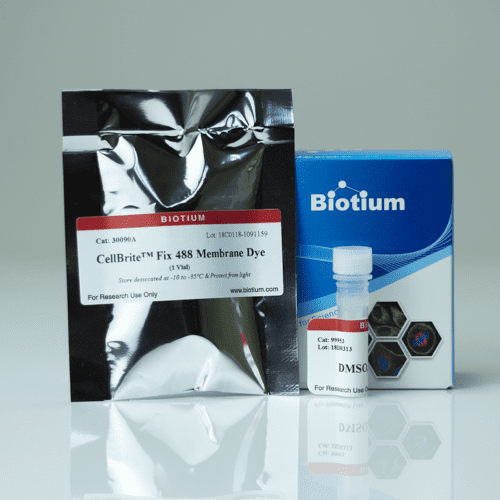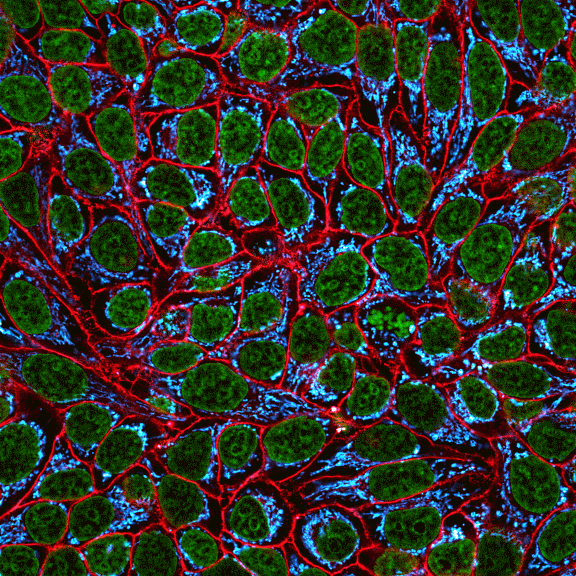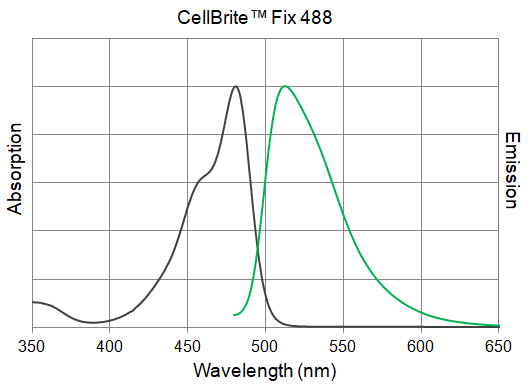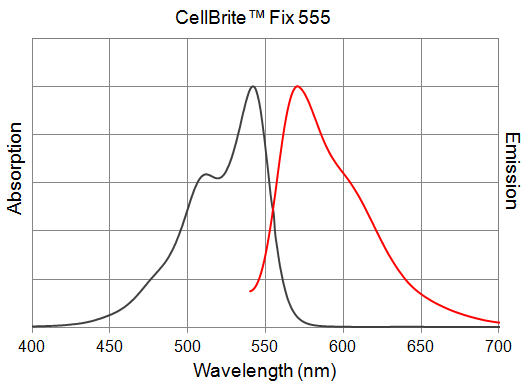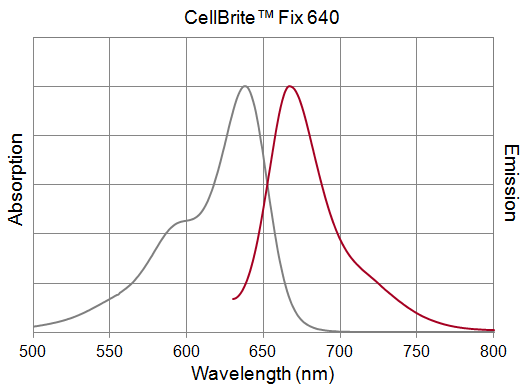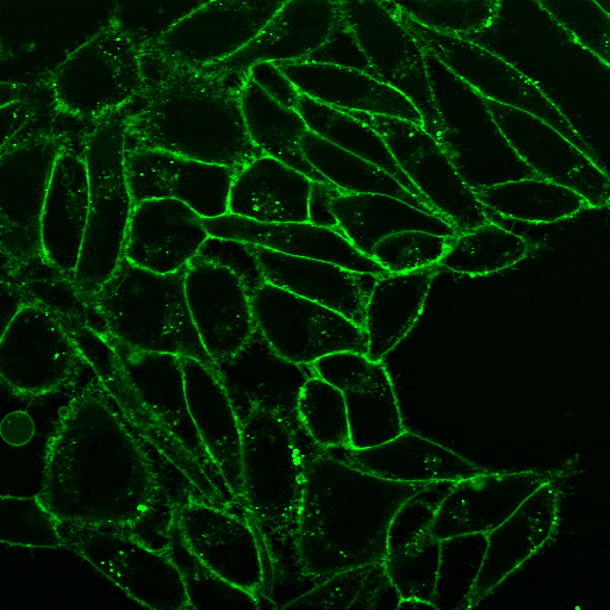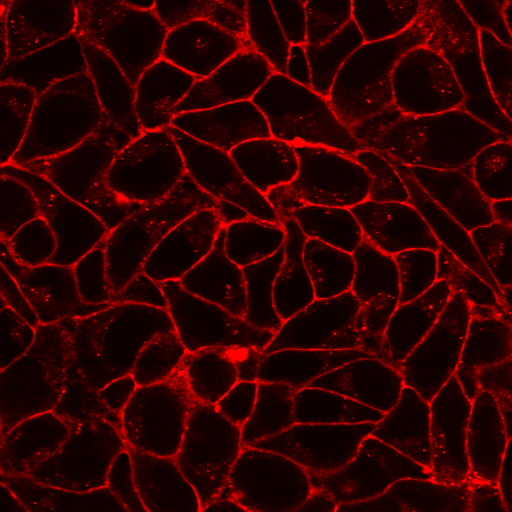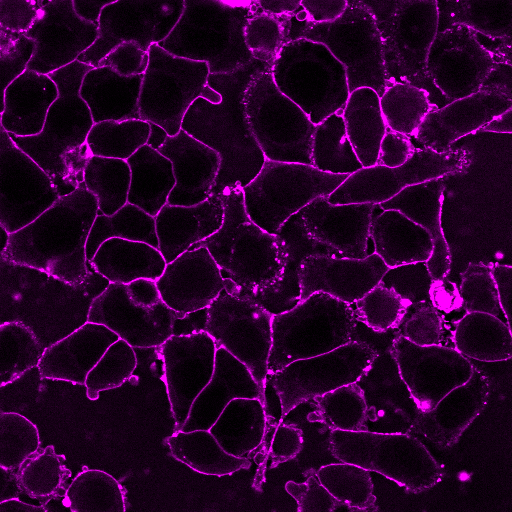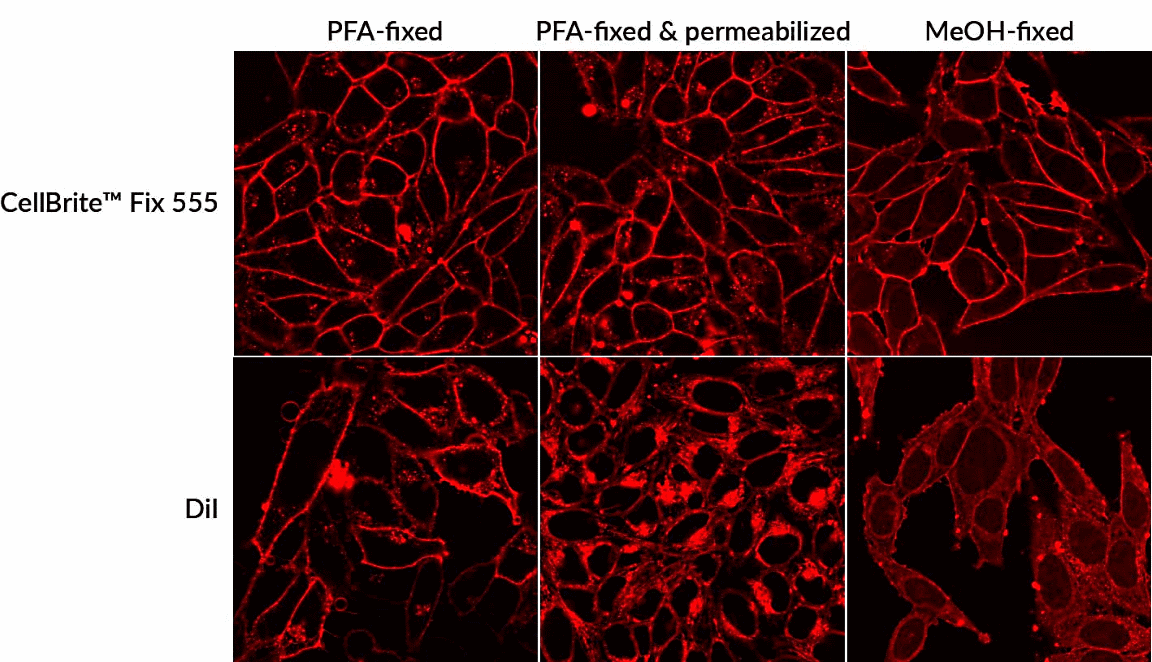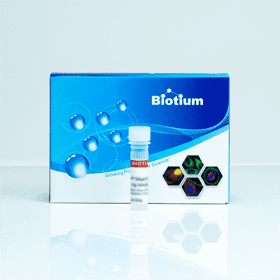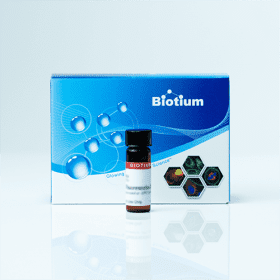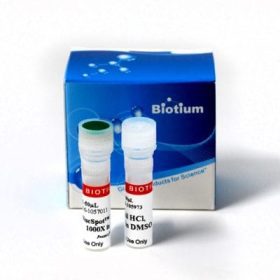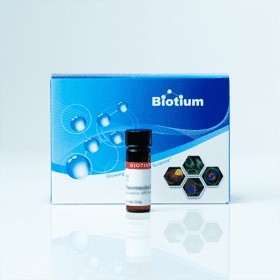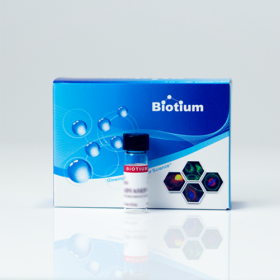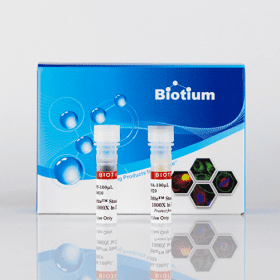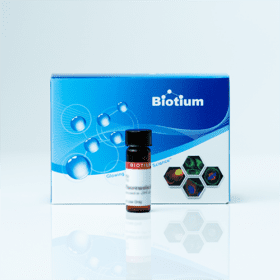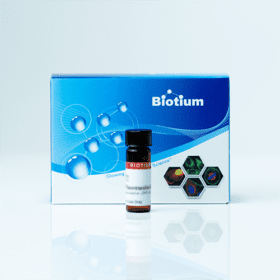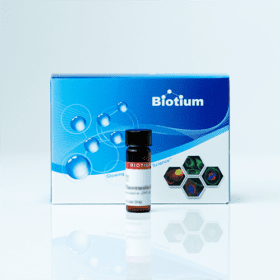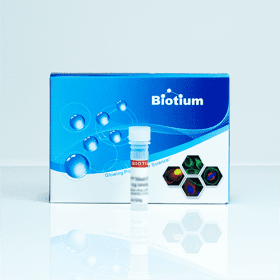Biotium products are distributed only in Singapore and Thailand.
Unique fluorogenic membrane dyes that covalently stain the plasma membrane in live cells, and can withstand both fixation and detergent permeabilization.
| SIZECellBrite™ Fix488 |
CATALOG #
|
PRICE
|
|
Trial size(1 vial) |
#30090-T |
$165 |
|
Set of 5 vials |
#30090 |
$567 |
| CellBrite™ Fix555 |
CATALOG #
|
PRICE
|
|
Trial size(1 vial) |
#30088-T |
$139 |
|
Set of 5 vials |
#30088 |
$489 |
| CellBrite™ Fix640 |
CATALOG #
|
PRICE
|
|
Trial size(1 vial) |
#30089-T |
$139 |
|
Set of 5 vials |
#30089 |
$489 |
PRODUCT ATTRIBUTES
| Cellular localization |
Membrane/cell surface, Membrane/vesicular |
|---|---|
| For live or fixed cells |
Covalent & fixable stains, For live/intact cells |
| Assay type/options |
Co-cultures, Long term staining (24-72h) |
| Fixation options |
Fix after staining (formaldehyde), Fix after staining (methanol), Permeabilize after staining |
| Colors |
Green, Red, Far-red |
PRODUCT DESCRIPTION
CellBrite™ Fix dyes are unique fluorogenic membrane dyes that covalently stain the plasma membrane in live cells, and can withstand both fixation and detergent permeabilization.
- The only membrane dyes that withstand fixation and permeabilization
- Bright, uniform cell surface staining in 15 minutes
- Available with green, red and far-red fluorescence
- CellBrite™ Fix 488 validated in super-resolution imaging by SIM (Ref. 1)
- Each vial makes 20 uL of 1000X dye
Unique Fixable Membrane Stains
CellBrite™ Fix dyes are a series of proprietary fluorophores developed by Biotium to rapidly stain the outer plasma membranes of live cells. They are unique among membrane stains in that their surface staining can withstand permeabilization and methanol fixation, allowing plasma membrane staining to be combined with intracellular staining with antibodies. Other membrane dyes like DiO, DiI, Vybrant® membrane dyes, CellMask™, CellVue®, or PKH dyes can be fixed with formaldehyde. But they are not compatible with detergent permeabilization or methanol fixation, because these treatments extract lipophilic dyes from membranes. Unlike lectins such as WGA, which bind specific targets that may vary between cell types, CellBrite™ Fix dyes are general membrane stains.
CellBrite™ Fix dyes are amine-reactive and are designed to accumulate at the cell membrane, where they become covalently attached to membrane proteins. As a result, surface staining is well-retained after permeabilization or methanol fixation, with only a slight increase in intracellular fluorescence compared to formaldehyde fixation alone. CellBrite™ Fix dyes are only weakly fluorescent in aqueous media but become intensely fluorescent upon membrane staining. This fluorogenic property of the dyes makes the staining very specific with low background. Due to their better water solubility, CellBrite™ Fix dyes yield much more uniform staining compared to lipophilic carbocyanine dyes like DiO and DiI. The dyes are non-cytotoxic and do not readily transfer between cells.
CellBrite™ Fix dyes also can be used to stain yeast and bacteria (gram-positive or gram-negative). See our Cellular Stains Table for more information on how our dyes stain various organisms.
CellBrite™ Fix Membrane Stains are provided in lyophilized format. A vial of anhydrous DMSO is included for dye reconstitution. After reconstitution, each vial yields 20 uL of 1000X dye (download the product protocol for more information). The dyes are available with green, red, and far-red fluorescence. We also offer MemBrite™ Fix Cell Surface Staining Kits. with a wide selection of dye colors, including super-resolution compatible options. For more information, see Frequently Asked Questions.
Tips for Success
Note that CellBrite™ Fix dyes stain dead cell more intensely than live cells. Please see our Tech Tip: Five Steps for Success with Membrane and Surface Stains for tips on staining and imaging (step 5) with CellBrite™ Fix.
Find the Right Stain for Your Application
CellBrite™ Fix dyes must be used to stain live cells before fixation. They cannot be used to stain cells that are already fixed (the dyes primarily label intracellular membranes in fixed cells). Our original CellBrite™ Cytoplasmic Membrane Dyes can be used to stain cells after fixation and permeabilization, see our Tech Tip: Combining Lipophilic Membrane Dyes with Immunofluorescence. To find the right stain for your application, see our Membrane & Cell Surface Stains Comparison, or download our Membrane & Surface Stains Brochure.
CellBrite™ Fix dyes are designed to be fixed shortly after staining. With prolonged dye incubation, or if cells are cultured after staining, the dyes will be internalized by endocytosis, resulting in labeling of intracellular vesicles. By 24 hours after staining, most of the dye will be localized inside the cell, not on the cell surface. For long-term visualization of cell morphology in culture, our stable, non-toxic ViaFluor® SE Cell Proliferation Kits may be a more suitable alternative. ViaFluor® SE dyes covalently label cells throughout the cytoplasm and can be tracked for several days or longer by microscopy or flow cytometry. See our Tech Tip: Using ViaFluor® SE Stains for Cell Tracing and Co-Culture to learn more.
Note: CellBrite™ Fix dyes carry an overall net positive charge. We have had customers report that they may be permeant to mechanotransduction or other cation channels on nerve cells, similar to cationic styryl dyes such as FM®1-43 (see J Neurosci (2013) 23(10), 4054), leading to significant intracellular accumulation or staining. Our MemBrite™ Fix dyes are not positively charged, and therefore should not have this issue.
CellBrite™ Fix Ordering Information
| Dye | Abs/Em | Size | Catalog number |
|---|---|---|---|
| CellBrite™ Fix 488 | 480/513 nm | Trial size (1 vial) | 30090-T |
| Set of 5 vials | 30090 | ||
| CellBrite™ Fix 555 | 542/571 nm | Trial size (1 vial) | 30088-T |
| Set of 5 vials | 30088 | ||
| CellBrite™ Fix 640 | 638/667 nm | Trial size (1 vial) | 30089-T |
| Set of 5 vials | 30089 |

